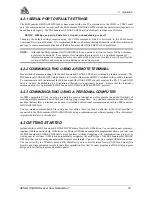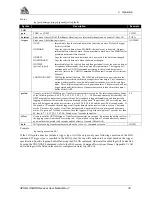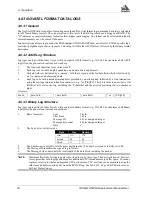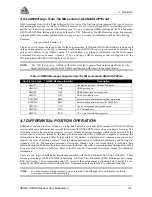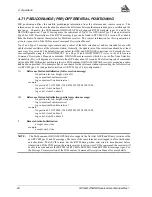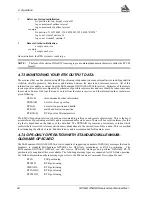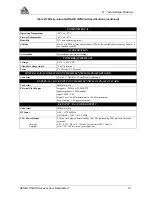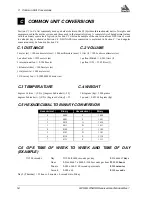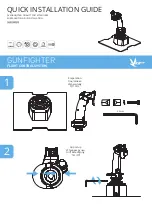
4
Operation
GPS/GLONASS Receiver User Manual Rev 1
39
4.6.4.2 NMEA Logs From The MiLLennium-GLONASS GPSCard
NMEA messages start with a $ sign followed by five letters. The first two letters represent the type of receiver
broadcasting the message (i.e. GP for a GPS-only receiver, GL for GLONASS and GN for a combined receiver),
and the last three letters represent the message type. To log a supported NMEA message on the MiLLennium-
GLONASS GPSCard, the log type is given by the prefix ‘NM’ followed by the NMEA message type. For example,
to log the NMEA geographic position (GLL) message every 10 seconds the command would be the following:
Example:
Log com1 NMGLL ontime 10
The receiver will choose the receiver type for the output message. If GPS and GLONASS satellites are being used
in the position calculation, the above command would output a $GNGLL log every ten seconds. In all cases, the
output will conform to the NMEA version 2.2 specification. For reference information see the MiLLennium
Commands Description Manual, Appendix F. For a listing of NMEA messages that are supported by the
MiLLennium-GLONASS GPSCard please see Table 4.1.
NOTE:
The ‘GP’ log types (i.e. GPGLL) will still be accepted to support backwards compatibility but the
output will always conform to the NMEA specification with respect to the output prefix.
Table 4.1 NMEA Messages Supported By The MiLLennium-GLONASS GPSCard
4.7 DIFFERENTIAL POSITION OPERATION
Differential operation involves setting up a radio link between a stationary MiLLennium-GLONASS GPSCard
receiver at a known point and one or more MiLLennium-GLONASS GPSCard receivers at unknown locations. The
stationary receiver, known as the reference receiver, broadcasts various messages which can be received by the
various remote receivers. Internally, the remote MiLLennium-GLONASS GPSCard is capable of utilising this
information in the navigation filter. It is possible in this manner to eliminate most common error sources and
improve the level of position accuracy. A more detailed description of differential positioning can be found in
Appendix A of the MiLLennium Commands Description Manual. It is your responsibility to provide a data
communications link between the reference and remote stations. Generally, a communications link capable of 4800
bits per second or higher is sufficient. Refer to the MiLLennium Commands Description Manual for additional
information.
There are two types of differential positioning available with the MiLLennium-GLONASS GPSCard. These
include pseudorange (PSR) differential positioning and Real-Time Kinematic (RTK) differential positioning.
RTK positioning is more complicated and CPU intensive than pseudorange positioning and is available as an
option on the MiLLennium-GLONASS GPSCard. Implementation for both modes is explained following.
NOTE:
It is not necessary for the remote receiver to remain fixed although this could improve solution
convergence time in RTK positioning.
NovAtel Log Type
NMEA Message Identifier
Description
NMGLL
GLL
Geographic position - Latitude/Longitude
NMGNS
GNS
GNSS position fix
NMGST
GST
GNSS Pseudorange error statistics
NMGSV
GSV
GNSS Satellites in view
NMRMB
RMB
Recommended minimum navigation information
NMRMC
RMC
Recommended minimum specific GNSS data
NMVTG
VTG
Course over ground and ground speed
NMZDA
ZDA
UTC time and date
NMZTG
ZTG
UTC, time to destination waypoint

